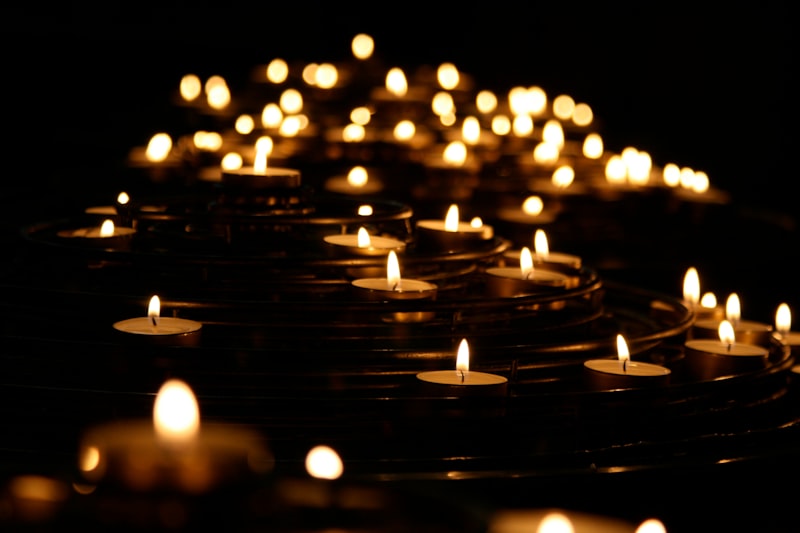Imagine a sunrise painting the sky with hues of pink and gold, casting a soft, warm glow over the landscape. Or the gentle rays filtering through a canopy of leaves, dappling the forest floor with patterns of light and shadow. Natural light has this incredible ability to sculpt shapes, enhance textures, and evoke emotions effortlessly.
Photographers often chase the perfect light, waiting patiently for the golden hour—the fleeting moments just after sunrise or before sunset—when the sun hangs low, casting a soft, golden light that bathes everything it touches in a magical glow. This warm, diffused light is ideal for portraits, landscapes, and still life photography, adding a sense of warmth and depth to the subjects.
On cloudy days, when the sun plays hide-and-seek behind a veil of soft clouds, photographers embrace the soft, even light that wraps around subjects like a gentle embrace. This diffused light minimizes harsh shadows and highlights, making it perfect for capturing details and textures without distractions.
Contrastingly, the harsh midday sun, while challenging, can be harnessed creatively to create dramatic effects and strong shadows that add depth and dimension to photos. It’s all about understanding how light interacts with your subject and using it to your advantage.
In essence, natural light isn’t just about brightness—it’s about mood, atmosphere, and storytelling. It paints scenes with a palette of colors and shapes, allowing photographers to play with light and shadow, creating visual narratives that resonate with viewers on a deeper level. Whether you’re capturing the quiet beauty of a dew-kissed morning or the vibrant energy of a bustling city street, natural light is your partner in crafting images that speak volumes without saying a word.
Capturing Timeless Moments: Mastering Natural Light Photography Techniques
Ever wonder how some photographs seem to effortlessly capture the essence of a moment, glowing with a natural warmth and clarity? It’s not just about having a good camera; mastering natural light photography techniques can make all the difference in creating stunning, timeless images.
Natural light is a photographer’s best friend and greatest challenge rolled into one. Unlike artificial lighting, which can be controlled and manipulated, natural light changes throughout the day, offering a dynamic canvas for photographers to explore. From the soft, golden hues of sunrise to the warm, diffused light of midday and the dramatic shadows of sunset, each moment presents a unique opportunity to capture emotion and depth in your photos.
One of the key techniques in natural light photography is understanding how to harness and manipulate different qualities of light. For instance, shooting during the golden hour—just after sunrise or before sunset—can imbue your photos with a soft, warm glow that adds a magical quality to your subjects. Alternatively, diffused light on overcast days minimizes harsh shadows, ideal for portraits and close-ups where even lighting is crucial.
Composition plays a crucial role in natural light photography as well. Experiment with angles and perspectives to play up the interplay of light and shadow. Consider how light interacts with your subject—whether it’s filtering through leaves to create dappled patterns or casting long, dramatic shadows during the ‘magic hour’. These elements can add depth and interest to your photographs, elevating them from ordinary snapshots to captivating works of art.
Another aspect to master is understanding your camera’s settings and how they interact with natural light. Adjusting your aperture, shutter speed, and ISO sensitivity allows you to control exposure and capture the nuances of light more effectively. For example, a wider aperture (lower f-stop) creates a shallow depth of field, perfect for isolating your subject against a dreamy, blurred background bathed in golden sunlight.
Ultimately, mastering natural light photography is a journey of exploration and experimentation. It’s about developing an intuitive sense of when and how to capture those fleeting moments that unfold in the perfect light. Whether you’re photographing landscapes, portraits, or still life, embracing the nuances of natural light can transform your photography from technically proficient to emotionally resonant, preserving moments in time that tell compelling stories without saying a word.
Unlocking the Secrets of Golden Hour Photography: Harnessing Natural Light
During the golden hour, the sun sits low in the sky, filtering through the atmosphere at a sharper angle, which softens the intensity of light. This effect reduces harsh shadows and creates a warm, flattering glow on everything it touches. Whether you’re photographing landscapes, portraits, or cityscapes, this natural light can transform an ordinary scene into something extraordinary.
One of the key secrets to successful golden hour photography is timing. Planning ahead and knowing the exact time of sunrise or sunset in your location allows you to make the most of this precious time. Arriving early ensures you can set up your equipment and compose your shots without feeling rushed, maximizing your chances of capturing that perfect moment.
Composition plays a crucial role during the golden hour. The warm light can emphasize textures, contours, and patterns, adding depth and dimension to your photos. Experimenting with different angles and perspectives can yield surprising results, so don’t be afraid to move around and explore your surroundings.
Using the right settings on your camera is essential for capturing the true essence of golden hour photography. Opt for a wide aperture (low f-number) to achieve a shallow depth of field, which beautifully blurs the background while keeping your subject sharp. Adjusting your white balance slightly warmer than usual enhances the golden tones, making your photos appear richer and more vibrant.
Mastering golden hour photography requires patience, preparation, and a keen eye for detail. By harnessing the natural light during this magical time of day, you can unlock the full potential of your photographs and create images that evoke emotion and wonder.
From Dawn to Dusk: The Art of Natural Light in Landscape Photography
Imagine standing on the edge of a cliff at dawn, witnessing the first rays of sunlight painting the sky in hues of orange and pink. This magical moment epitomizes the essence of landscape photography—capturing nature’s beauty in its purest form using natural light.
Natural light is a landscape photographer’s best friend and greatest challenge. Unlike artificial lighting, which can be controlled and manipulated, natural light changes constantly throughout the day, creating a dynamic canvas for photographers to work with. From the soft, golden light of sunrise to the dramatic, long shadows of sunset, each moment offers a unique opportunity to create stunning images that evoke emotion and awe.


At dawn, the world awakens with a gentle glow that bathes landscapes in a soft, ethereal light. This time of day is often favored by photographers for its serene atmosphere and the delicate colors that paint the horizon. It’s a time when the landscape seems to whisper secrets of tranquility and new beginnings.
As the day progresses, the sun climbs higher in the sky, casting stronger, more direct light onto the landscape. Midday photography presents a different challenge—the harsh sunlight can create stark contrasts and deep shadows. However, skilled photographers use this time to experiment with textures and patterns, finding beauty in the interplay of light and shadow.
Towards evening, the magic of natural light reaches its crescendo during the golden hour—just before sunset—when the sky becomes a canvas of warm tones and long, sweeping shadows. This hour is revered by photographers worldwide for its ability to transform even the most ordinary scene into a breathtaking work of art.
Mastering the art of natural light in landscape photography requires patience, observation, and an understanding of how light shapes and defines a scene. By harnessing the nuances of dawn, daylight, and dusk, photographers can create images that not only capture a moment in time but also tell a story of nature’s ever-changing beauty.
Illuminating Portraits: How Natural Light Enhances Emotional Depth
Imagine a portrait bathed in the golden hues of a sunrise. The soft, diffused light gently kisses the subject’s face, highlighting every contour, casting subtle shadows that add depth and texture. In these moments, the photographer isn’t just capturing an image; they’re capturing a mood, a feeling—an essence frozen in time.
Unlike harsh artificial lights that can flatten features and create stark contrasts, natural light has a softness that flatters and enhances. It wraps the subject in a natural embrace, revealing nuances of expression and character that might otherwise remain hidden. This play of light and shadow adds layers to the narrative of the portrait, drawing the viewer deeper into the story behind the eyes.

Moreover, natural light is versatile. From the crisp clarity of morning light to the warm, golden tones of the “golden hour” before sunset, each moment offers a unique palette for photographers to paint with. It’s not just about brightness but about the quality of light—the way it subtly changes throughout the day, casting different moods and emotions onto the canvas of a portrait.
Photographers who master the art of using natural light unlock a world of possibilities. They understand how to position their subject to catch the most flattering angles, when to shoot to achieve the desired effect, and how to harness the ambient light to create a compelling visual narrative. In essence, they become storytellers, using light as their pen to write tales of emotion, character, and beauty.
Frequently Asked Questions
What are some techniques to harness natural light effectively in photography?
Learn effective techniques to optimize natural light for photography, enhancing your images with clarity and depth.
How does natural light impact the mood of a photograph?
Discover how natural light affects the mood of photographs. Learn how different types of light can enhance or alter the atmosphere, influencing colors, shadows, and emotional appeal. Explore techniques to harness natural light creatively for stunning photographic results.
What are the best times of day for capturing natural light in photography?
Learn about the optimal times for capturing natural light in photography, maximizing the quality of your photos with expert timing advice.
How can I improve my photography using natural light without expensive equipment?
Discover how to enhance your photography with natural light, even on a budget. Learn practical techniques for utilizing available light sources effectively, understanding lighting conditions, and adjusting camera settings for optimal results without costly gear.
Why is understanding natural light important for photographers of all skill levels?
Understanding natural light is crucial for photographers because it directly impacts the mood, quality, and atmosphere of their photos. It allows them to create more compelling and visually pleasing images without relying heavily on artificial lighting. By mastering natural light, photographers can enhance their creativity, improve their technical skills, and capture more authentic moments in various environments.


